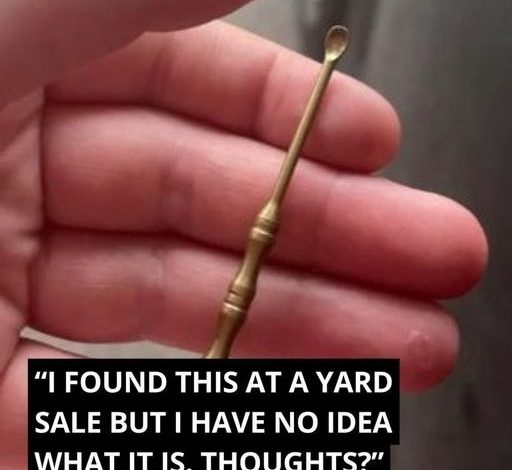
ADVERTISEMENT
Unveiling the Mystery: The Ancient Tool in Your Hand
The image you’ve shared shows a small, ornate tool that might seem unfamiliar to many. It’s understandable to be puzzled by such an object, especially when found at a yard sale where items from various eras and cultures can end up. The tool in question, however, is not just a random trinket; it’s an item with historical significance and practical use, particularly in certain cultures. This is an earwax removal tool, commonly referred to as an “ear pick” or “ear spoon.”
A Historical and Cultural Perspective
Ear picks like the one in your hand have been used for centuries, primarily in Asian cultures such as Chinese, Japanese, and Korean societies. The practice of ear cleaning is not just about hygiene; in some cultures, it has deep-rooted significance, involving rituals and even familial bonding moments.
The design of this tool is both simple and effective. One end typically features a small, spoon-like scoop that is used to gently remove earwax. The shape allows for precise and careful cleaning, ensuring that the ear canal is not damaged during the process. The handle might be decorated or shaped to make it easy to hold and use, and sometimes these tools are made from precious materials like silver or gold, indicating their value in certain cultures.
The Art of Ear Cleaning
In some cultures, ear cleaning is more than a solitary activity. It can be a shared experience between family members, especially between parents and children, where the process is done with care and tenderness. The tradition of ear cleaning, using tools like the one you’ve found, is considered by some to be an act of love and care, passed down through generations.
In Japan, for instance, ear cleaning using a tool called “mimikaki” is a common practice. Mimikaki can be simple or highly decorative, and the act of ear cleaning is sometimes considered a way to bond with loved ones. In traditional Chinese medicine, ear cleaning is associated with maintaining good health, as the removal of excess wax is believed to prevent ear-related ailments.
ADVERTISEMENT
Modern Usage and Collectibility
While the use of such tools has declined in the West, where cotton swabs have become more common (though not necessarily safer), these traditional ear picks are still in use in parts of Asia. They are also collected by enthusiasts who appreciate their historical and cultural value. Some modern versions even come with additional features like LED lights to aid in visibility during cleaning.
The ear pick you’ve found at a yard sale could be a genuine antique or a modern reproduction. Either way, it represents a fascinating piece of cultural history. If you’re interested in its origins, the material it’s made from, and its exact age, you might consider having it appraised by an expert in antiques or Asian artifacts.
Conclusion
What you have discovered is more than just a small, mysterious tool. It’s a bridge to cultural practices that have spanned centuries, connecting you to traditions that value care, precision, and family bonding. Whether you choose to use it as intended or keep it as a unique piece of cultural heritage, this ear pick is a reminder of the diverse ways in which people have approached the seemingly simple task of ear hygiene across different times and places.
ADVERTISEMENT




